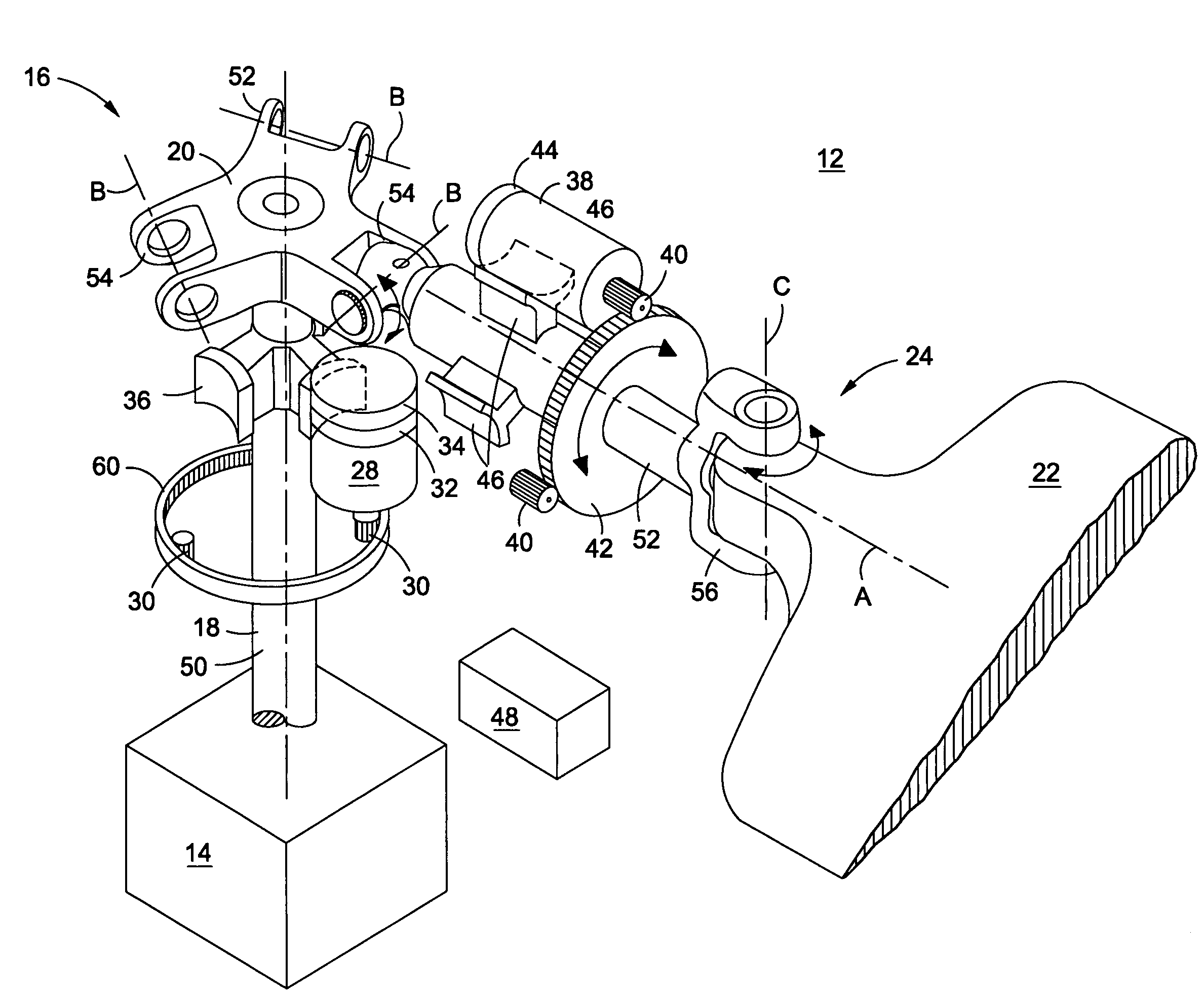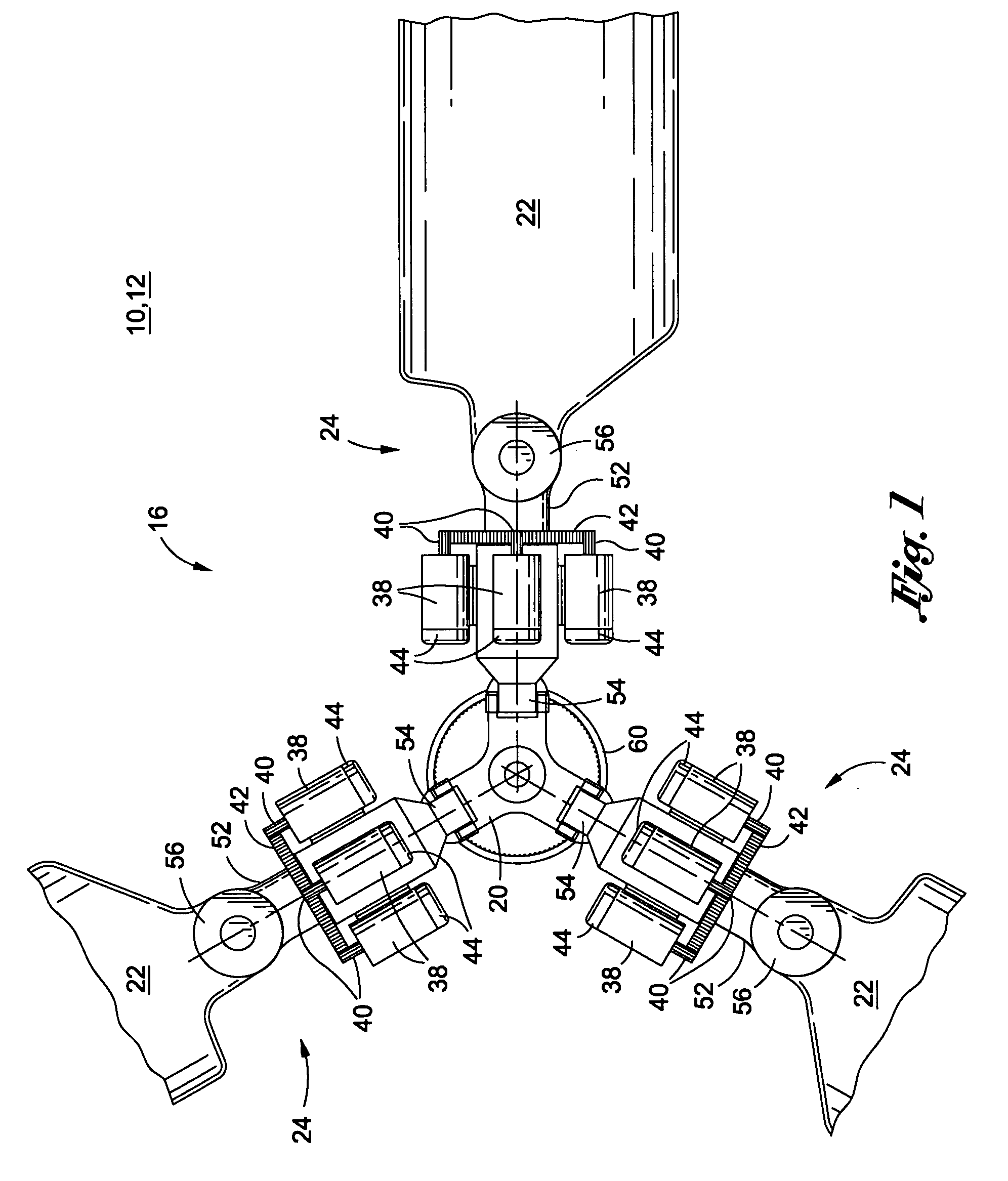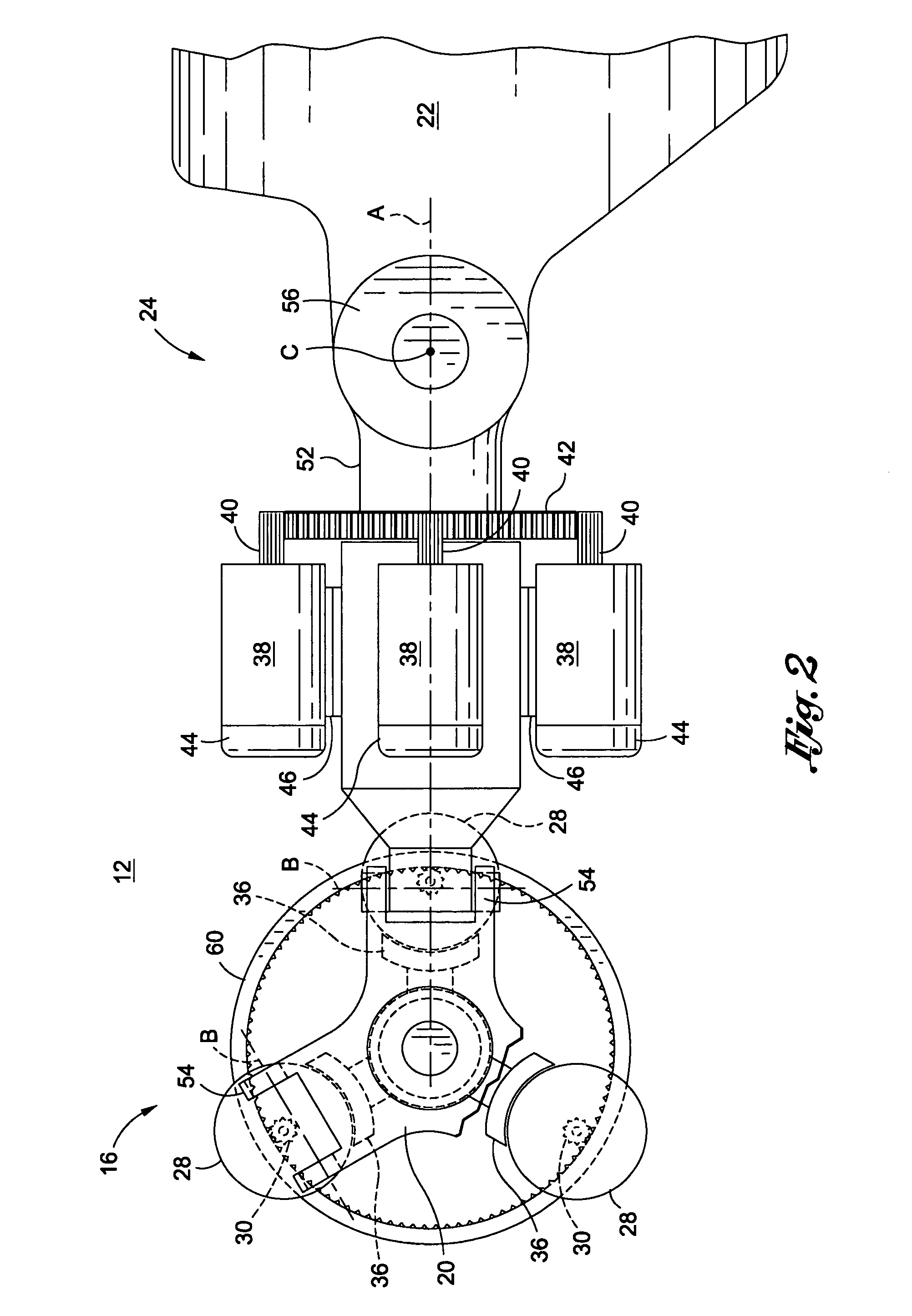Swashplateless helicopter blade actuation system
a blade actuation system and blade technology, applied in the field of blade actuation systems, can solve the problems of fatigue damage to structural components of the helicopter, excessive vibration and noise, and reduce passenger and crew comfort, so as to eliminate or reduce maintenance costs, simplify the design, and facilitate the provision of power.
- Summary
- Abstract
- Description
- Claims
- Application Information
AI Technical Summary
Benefits of technology
Problems solved by technology
Method used
Image
Examples
Embodiment Construction
[0035]Referring now to the drawings wherein the showings are for purposes of illustrating preferred and various embodiments of the present disclosure only and not for purposes of limiting the same, FIGS. 1-4 illustrate a blade actuation system 12 as may be implemented on a helicopter 10 or other rotorcraft. The rotorcraft or helicopter 10 may comprise a rotor drive mechanism 14 such as an engine and / or transmission as part of a non-rotating frame 64 of the helicopter 10. As part of the rotating frame 62, a rotatable rotor shaft 18 may extend outwardly from the drive mechanism. A rotor hub 20 may be fixedly connected to a rotor head 16 mounted on the rotor shaft 18. A plurality of rotor blades 22 may be connectable to the rotor hub 20.
[0036]In one embodiment, the blade actuation system 12 comprises at least one and, more preferably, a plurality of motors 38 which may be operatively coupled to at least one of the rotor blades 22. The motors 38 may be provided in sets of three in order...
PUM
 Login to View More
Login to View More Abstract
Description
Claims
Application Information
 Login to View More
Login to View More - R&D
- Intellectual Property
- Life Sciences
- Materials
- Tech Scout
- Unparalleled Data Quality
- Higher Quality Content
- 60% Fewer Hallucinations
Browse by: Latest US Patents, China's latest patents, Technical Efficacy Thesaurus, Application Domain, Technology Topic, Popular Technical Reports.
© 2025 PatSnap. All rights reserved.Legal|Privacy policy|Modern Slavery Act Transparency Statement|Sitemap|About US| Contact US: help@patsnap.com



